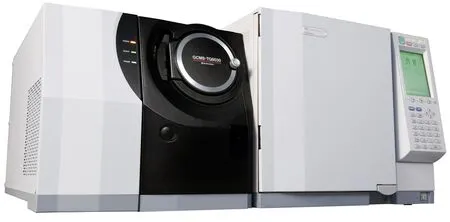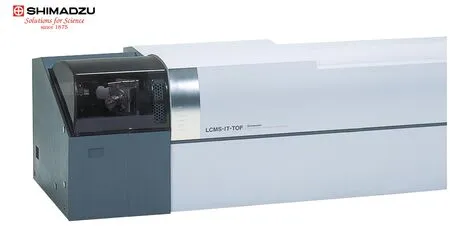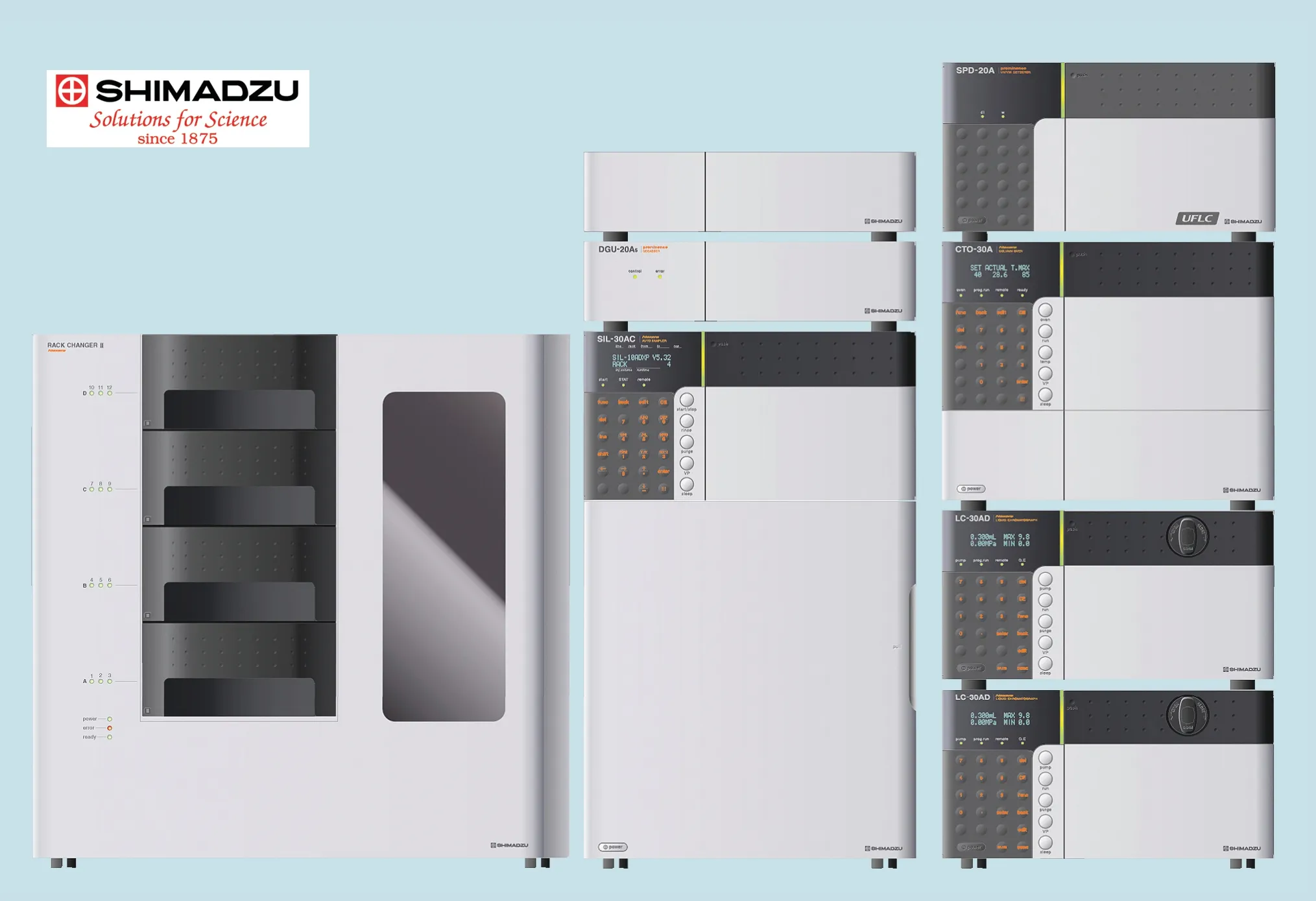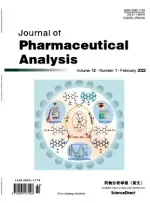Application of analytical instruments in pharmaceutical analysis
LCMS-8040
LCMS-8040 incorporates newly improved ion optics and collision cell technology to provide higher multiple reaction monitoring (MRM) sensitivity.
These improvements also yield higher sensitivity for scan mode measurements, expanding the potential range of LC/MS/MS applications.
Ultra-High Reliability
MRM optimization in Shimadzu's LCMS systems is based on a rapid series of automated flow injection analyses, requiring only minutes to perform. Multiple compounds can be optimized in an unattended sequence, freeing the analyst from tedious work. MRM parameters optimized for the LCMS-8030 can be transferred to the LCMS-8040, making it possible to transfer methods between systems. The LCMS-8040 offers the same ease of maintenance benefits as the LCMS-8030, and all consumables, such as desolvation lines (DL) and ESI capillaries, are interchangeable as well.
Ultra-High Sensitivity
By incorporating newly improved ion optics and collision cell technology, the LCMS-8040 provides higher multiple reaction monitoring (MRM) sensitivity. A five-fold increase in sensitivity (reserpine, S/N ratio) has been achieved by improving ion focusing and minimizing ion losses between multi-pole lenses. These improvements also yield higher sensitivity for scan mode measurements. This higher sensitivity expands the potential range of LC/MS/MS applications.
Ultra-High Speed
The LCMS-8040 was designed to provide significantly higher sensitivity while maintaining the high speed offered by the LCMS-8030. Ultrafast MRM transition speeds, up to 555 MRMs per second, are achieved by Shimadzu's UFsweeper? collision cell technology, proprietary highprecision quadrupole machining capabilities, and unique high voltage power supply technology. In addition, the LCMS-8040 features the world's fastest polarity switching at 15 msec. With this high-speed performance, the LCMS-8040 can dramatically improve analytical throughput.
Published papers by using LCMS-8040
Marta Rodriguez-Aller, Robert Gurny, Jean-Luc Veuthey, Davy Guillarme. Coupling ultra high-pressure liquid chromatography with mass spectrometry: Constraints and possible applications. Journal of Chromatography A, 2012, online, DOI: dx.doi.org/10.1016/j.chroma.2012.09.061.

GCMS-TQ8030
The Shimadzu GCMS-TQ8030 is the first triple quadrupole GC/MS/MS good enough to be called a Shimadzu.
The number and diversity of chemical substances that can harm the environment or organisms continues to increase significantly, but unambiguous identification can be difficult in the presence of a complex or interfering matrix. Significantly more selective and sensitive than a single quadrupole system, the GCMS-TQ8030 solves this problem. Components that cannot be analyzed by conventional scan or SIM modes are easily identified and quantified at trace levels in the presence of complex matrices using the Multiple Reaction Monitoring (MRM) mode.
For the ultimate in flexibility, the Twin Line option allows simultaneous installation of two columns into the MS for compound confirmation or multiple applications on a single system. In addition, the front-access ion source and Ecology mode reduce maintenance and cost of ownership.masses in two stages, making the instrument significantly more selective than a single quadrupole system. As a result, even components that cannot be analyzed by conventional scan or SIM modes can be easily identified and quantified in the presence of complex matrices using MRM. For example, MRM can be a particularly effective measurement tool for analyzing residual pesticides in food.
High-Speed Performance
UFsweeper? is a unique technology created by Shimadzu that minimizes collision cell length, while providing high CID efficiency and high ion transport speed. UFsweeper accelerates ions out of the collision cell by forming a pseudo-potential surface, as shown in the illustration below. This prevents any drop in signal intensity or crosstalk, even at fast measurement speeds


High Sensitivity and Enhanced Selectivity
Because GC/MS systems are able to identify individual components using retention time and mass spectra, they are especially useful for detecting trace-level contaminants in a variety of sample types. However, unambiguous identification can be difficult in the presence of a complex or problematic matrix. Multiple Reaction Monitoring (MRM) in GC/MS/MS systems separates
Ultimate Ease of Use
The Automatic Adjustment of Compound Retention Time (AART) function adjusts the retention times of target components based on linear retention indices (LRI) and the retention times of n-alkanes. The AART function easily adjusts retention times, even for simultaneous MRM analysis of multiple components.
LCMS-IT-TOF
The LCMS-IT-TOF is a new type of mass spectrometer that combines QIT (ion trap) and TOF (time-of-flight) technologies. When combining QIT and TOF, the greatest technological challenges were the efficient introduction of ions into the QIT and the simultaneous ejection of trapped ions to the TOF. Here, we introduce the newly developed technologies used to solve these problems. The source design, desolvation capillary and reduced collision ion focusing Q-Array were adapted from Shimadzu's successful single-quad HPLC mass spectrometer. The Octapole Lens can introduce eluted ions from the LC to the ion trap by CII (Compressed Ion Injection) method efficiently. The ion trap QIT gives an efficient MSncapability with our new cleaning technology. In addition, BIE (Ballistic Ion Extraction) technology, provides high resolution/accuracy for all MS, MSn... modes. The temperature control of the flight tube gives a mass stability with stabilizing the length of the ion flight and ion acceleration voltage which affects the mass stability. Dual-Stage Reflectron gives an excellent resolution with optimizing energy absorption and time convergence.
High resolution & High precision in MSn measurement
The stable high-resolution spectra achieved throughout a wide mass range and high precision MSndata are derived from the DSR: Dual-Stage Reflectron and the use of BIE: Ballistic Ion Extraction.These instrument advances can strongly assist in the use of MS for predicating accurate structural details.
High Throughput
Increased amounts of information are obtained for each measurement enabling much higher reliability in structural analysis. High-throughput analysis can be realized with the world's best performance hybrid MS used for structural analysis in terms of high-speed mass spectrum measurement and high-speed ion polarity switching.
High Sensitivity
High-Sensitivity detection of low concentration samples is derived through the use of Compressed Ion Injection (CII) within the ion optics, allowing for the ions to be placed efficiently into the ion trap.

Published papers by using LCMS-IT-TOF
1. Qundi Liu, et al. High-speed counter-current chromatography preparation and separation of naringin, meranzin hydrate and isomeranzin from Exocarpium Citri Grandis. Chinese Journal of Pharmaceutical Analysis, 2011, 31:831-834.
2. Hong Chang, et al. Isolation and identification of anthocyanins in the fruits of Prunus Humilis Bunge. Food Science, 2011, 32:59-63.
3. Naoko Yoshinaga, et al. Fatty acid amides, previously identified in caterpillars, found in the cricket teleogryllus taiwanemma and fruit fly drosophila melanogaster larvae. Journal of Chemical Ecology, 2007, 33:1376-1381.
NEXERA UHPLC System
Nexera is an all-round LC system like no other and is truly worthy of being called a next-generation UHPLC system. It uses revolutionary technology to offer highperformance ultra-high speed LC analysis and the fl exibility to allow confi guring systems for a wide range of applications, such as systems for general-purpose analysis or green LC systems that reduce the usage of organic solvents.
The Only no compromise UHPLC system High speed
High-speed injection, extra-low gradient delay volume combined with the lowest carryover without rinsing enable ultra-high-speed cycle time.
High resolution
Widest pressure/fl ow range (130 MPa up to 3 mL/min) allows for the use of long small-particle columns to maximize peak capacity.
Flexibility & expandability
Modular design, pre-treatment autosampler, and valve options enable a wide variety of system confi gurations, including 2D, method development, and applicated systems.
Reliability & dependability
Engineered using the core competencies of Shimadzu's experience, Nexera provides superior data quality, robustness, and long-term performance.
Published papers by using NEXERA UHPLC System
1. Szabolcs Fekete, et al. The impact of extra-column band broadening on the chromatographic effi ciency of 5cm long narrow-bore very effi cient columns. Journal of Chromatography A, 2011, 1218:5286-5291.
2. Tamara P. Kondratyuk, et al. Resveratrol derivatives as promising chemopreventive agents with improved potency and selectivity. Molecular Nutrition & Food Research, 2011, 55(8):1249-1265.
3. Michelle L. Colgrave, et al. What is in a beer? Proteomic characterization and relative quantifi cation of hordein (gluten) in beer. Journal of Proteome Research, 2012, 11(1): 386-396.

 Journal of Pharmaceutical Analysis2013年4期
Journal of Pharmaceutical Analysis2013年4期
- Journal of Pharmaceutical Analysis的其它文章
- Quantitative analysis of cefixime via complexation with palladium(II) in pharmaceutical formulations by spectrophotometry
- Simultaneous pharmacokinetic assessment of cefadroxil and clavulanic acid in human plasma by LC-MS and its application to bioequivalence studies
- Application of UPLC-MS/MS for separation and quantification of 3α-Hydroxy Tibolone and comparative bioavailability of two Tibolone formulations in healthy volunteers
- A simple method for the isolation and purification of resveratrol from Polygonum cuspidatum
- Fingerprint analysis of Cirsium japonicum DC. using high performance liquid chromatography
- Ultra-high-performance liquid chromatography for the determination of exenatide in monkey plasma by tandem quadrupole mass spectrometry
